Galaxy Note 10 vs. Galaxy S10: Samsung Phone Face-Off
Which Samsung phone should you buy?
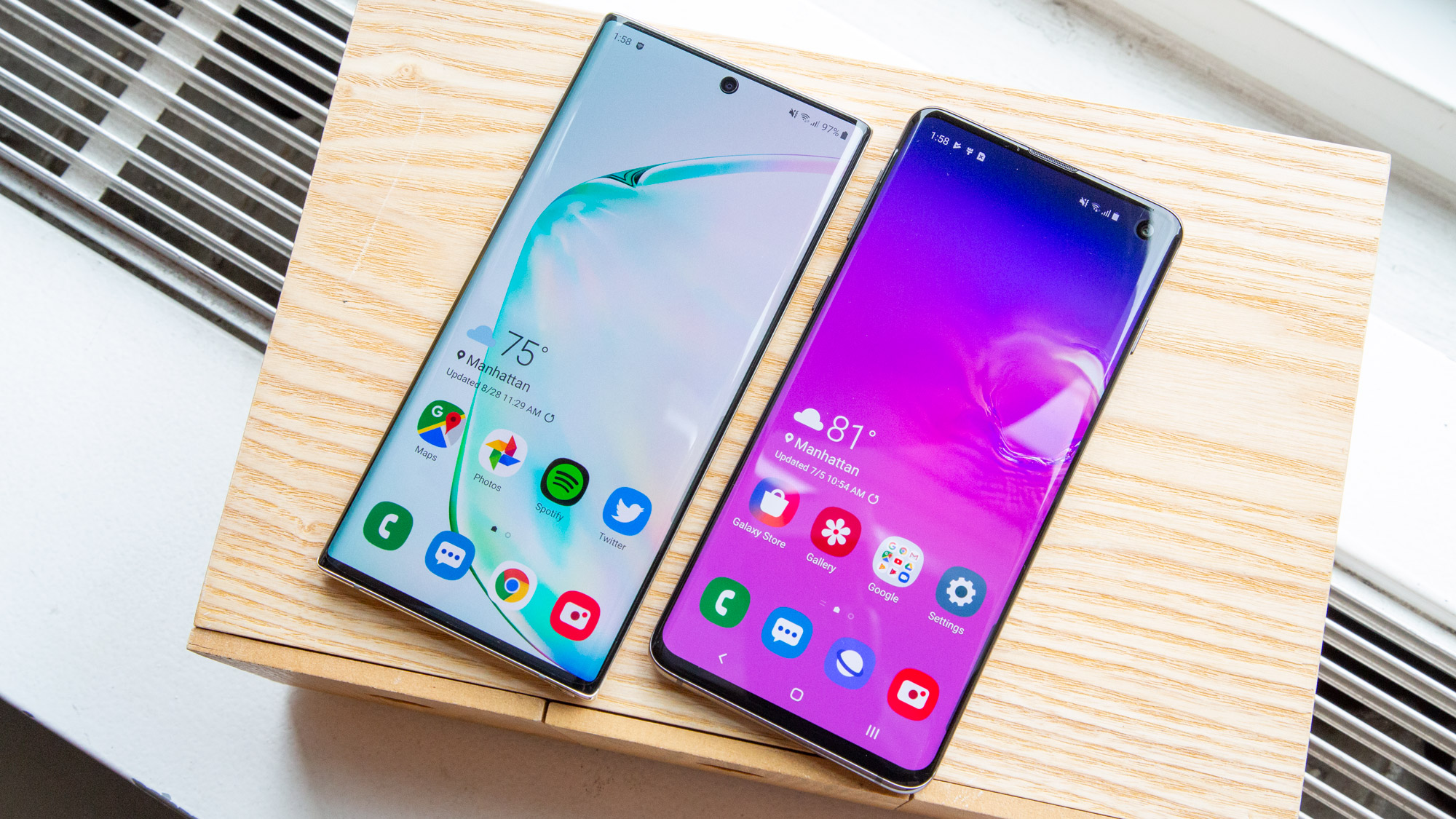
Once upon a time, Samsung offered two flagship smartphones: the Galaxy S and the Galaxy Note. The Note was bigger, came with a stylus and cost more. The distinction between the two models was very clear to everyone.
My, how times have changed. Today, Samsung offers four different versions of the Galaxy S10 and three different versions of the Galaxy Note 10. Complicating things further, the 6.3-inch, $949 Note 10 sits squarely in between the 6.1-inch, $899 S10 and the 6.4-inch, $999 S10 Plus, both in price and screen size. And yet, the Note's screen actually sports a lower resolution than both S10 variants.
Samsung has spoiled everyone for choice with its latest smartphones, so deciding between the core S10 and the Note 10 models isn't easy at first glance. Here, we'll break down the differences and offer a verdict as to which is a better use of your cash.
Galaxy Note 10 vs. Galaxy S10: Specs compared
| Header Cell - Column 0 | Samsung Galaxy Note 10 | Samsung Galaxy S10 |
|---|---|---|
| Price | $949 | $899 |
| Display | 6.3-inch Dynamic AMOLED (2280x1080) | 6.1-inch Dynamic AMOLED (3040x1440) |
| CPU | Snapdragon 855 (U.S.), Exynos 9825 (WW) | Snapdragon 855 (U.S.), Exynos 9820 (WW) |
| RAM | 8GB | 8GB |
| Storage | 256GB | 128GB, 512GB |
| microSD slot? | No | Yes, up to 512GB |
| Rear cameras | 16-MP ultrawide (ƒ/2.2), 12-MP wide angle (ƒ/1.5-ƒ/2.4), 12-MP telephoto (ƒ/2.1) | 16-MP ultrawide (ƒ/2.2), 12-MP wide angle (ƒ/1.5-ƒ/2.4), 12-MP telephoto (ƒ/2.4) |
| Front camera | 10 MP (ƒ/2.2) | 10 MP (ƒ/1.9) |
| Battery | 3,500 mAh | 3,400 mAh |
| Battery Life (Hrs:Mins) | 9:25 | 10:19 |
| OS | Android 9 Pie with Samsung One UI | Android 9 Pie with Samsung One UI |
| Colors | Aura Glow, Aura White, Aura Black, Aura Blue | Prism Black, Prism White, Prism Blue, Flamingo Pink |
| Size | 5.9 x 2.8 x .31 inches | 5.9 x 2.77 x 0.3 inches |
| Weight | 5.9 ounces | 5.5 ounces |
Design
The similar looks for the Galaxy Note 10 and Galaxy S10 conceal a number of key differences. The Note 10 has a larger display, with bezels that are ever-so-slightly slimmer than those on the S10. The Note 10 phablet is also a smidge heavier, and its sharper corners dig into your palms a bit more than the curved edges on the S10 do.
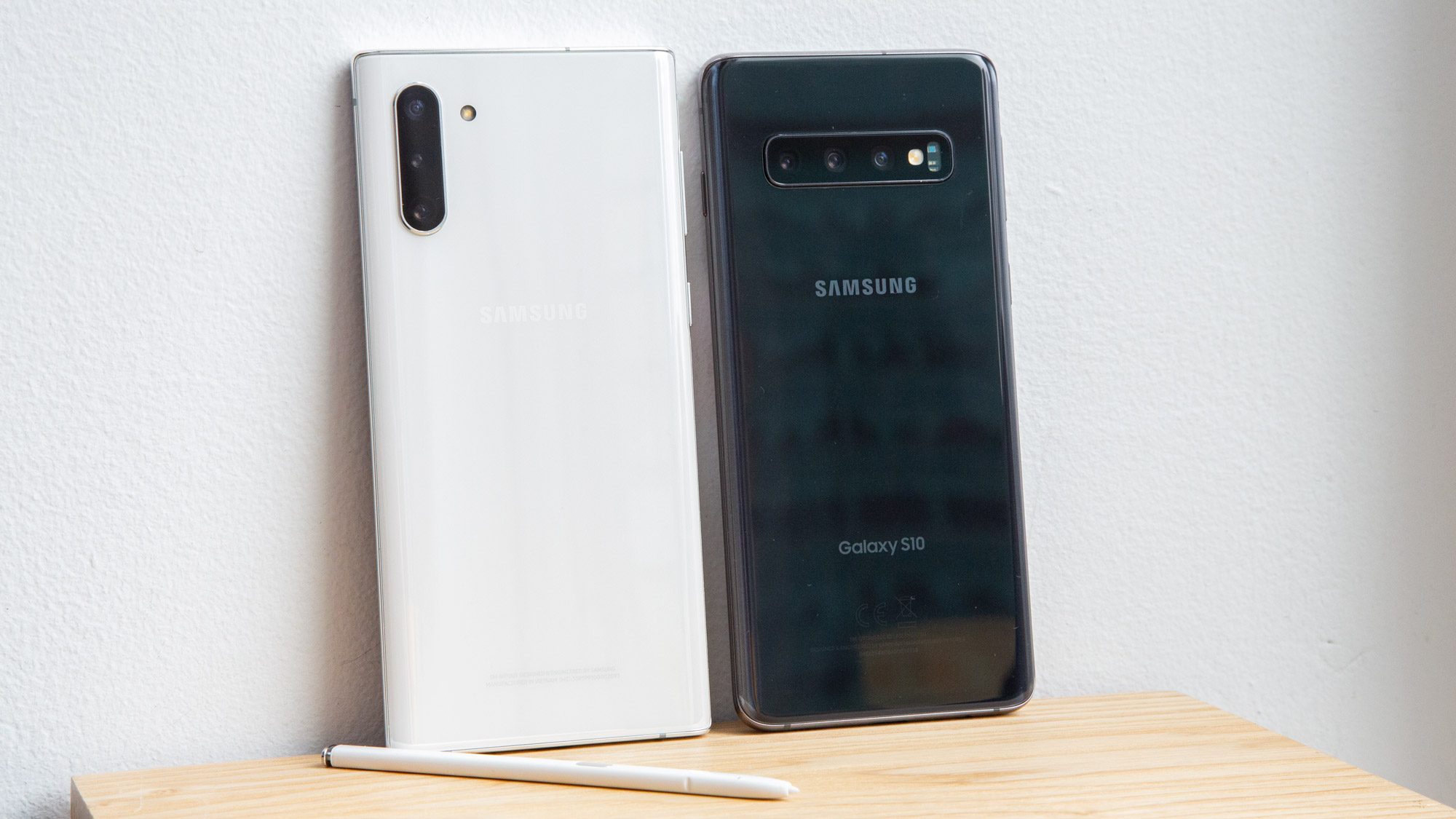
The two phones diverge in even more ways, so long as you know where to look. The S10 has a headphone jack; the Note 10 does not. Both devices pack Infinity-O panels, with hole-punch-style front-facing cameras, but the Note 10's lens is smaller and centered, while the S10's is stashed in the upper right corner. The S10 also has a microSD card slot, which the Note 10 lacks. At least the phablet comes equipped with 256GB of storage standard as a consolation; that's double the capacity on the base model of the S10.
The Note 10's big advantage, of course, is its S Pen stylus. This pen doubles as a Bluetooth-connected remote that you can use to perform Air Action gesture shortcuts in certain apps.
Both the Note 10 and S10 are beautiful handsets, with similarly impressive fit and finish and cutting-edge design. Yet, while the S10 gets lots of points for retaining its 3.5-millimeter jack, the Note 10's trimmed-down bezels and the versatility of the S Pen allow that device to edge Samsung's bread-and-butter flagship here — though not by much.
Winner: Galaxy Note 10
Display
Even though the Galaxy Note 10's display is two-tenths of an inch larger than the Galaxy S10's, the phablet actually packs the lower-resolution screen. The Note 10's 6.3-inch Dynamic AMOLED panel sports full-HD+ fidelity, while the S10's 6.1-inch display utilizes the same technology but features quad-HD+ pixels.
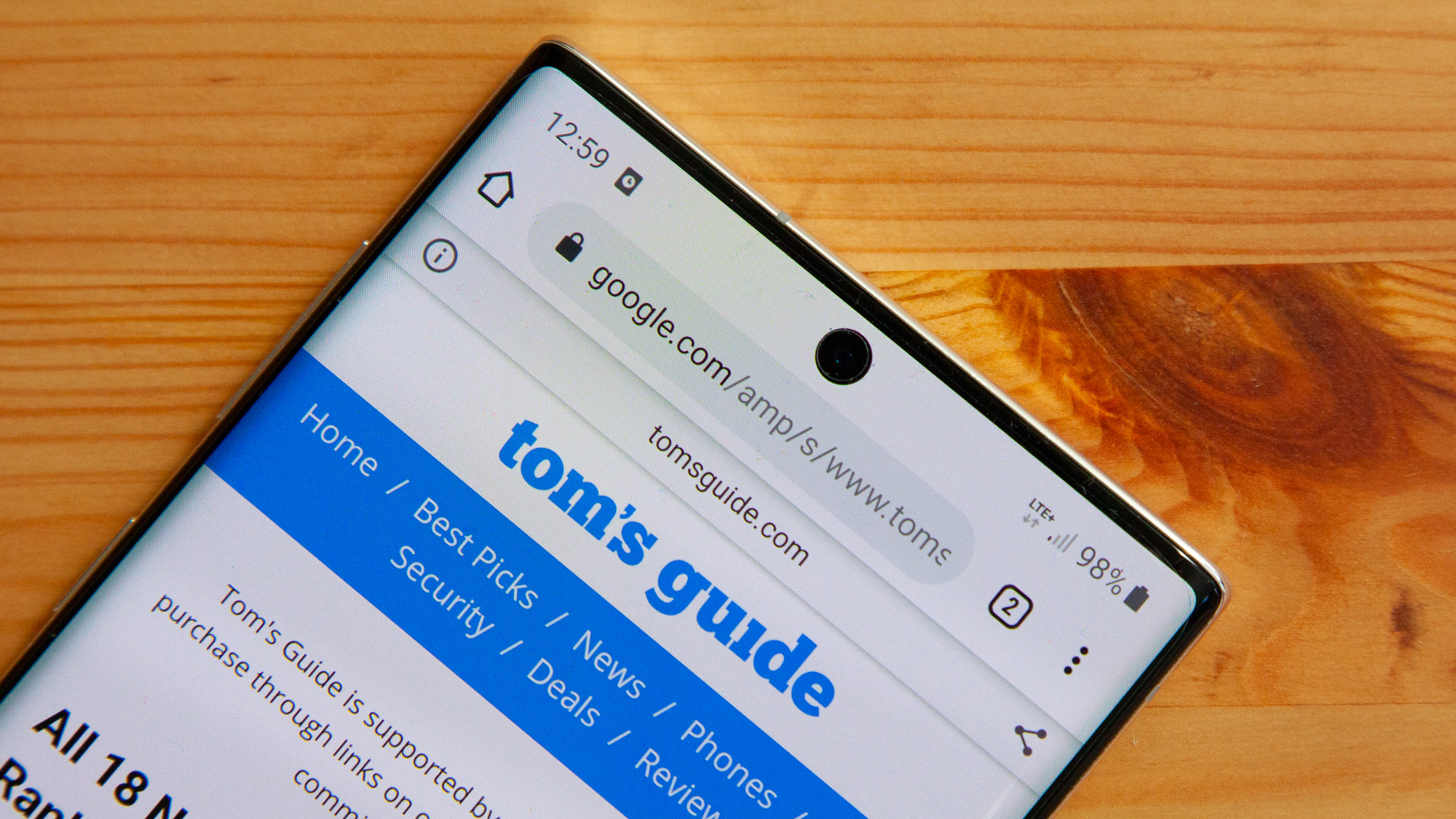
That said, the Note 10's display can get significantly brighter, hitting a peak of 674 nits, up from the S10's 611 nits. Both devices offer a choice between Natural and Vivid colors, with the latter option ratcheting up the saturation and straying further away from realistic hues. And as these are both Samsung panels in Samsung-branded flagship phones, you can rest assured they're among the most accurate and vibrant on the market.
So the choice then becomes one between higher brightness and more space with the Note 10 versus more pixels in the S10. Personally, the S10's superior pixel density earns it the nod for me. You're getting 550 pixels per inch on that device, compared to 401 with the Note 10. And while 401 pixels per inch is not at all shabby, the sharpness offered by the S10's panel is mesmerizing. Really, the only thing both devices are missing is the OnePlus 7 Pro's faster, 90-Hz refresh rate.
Winner: Galaxy S10
Camera
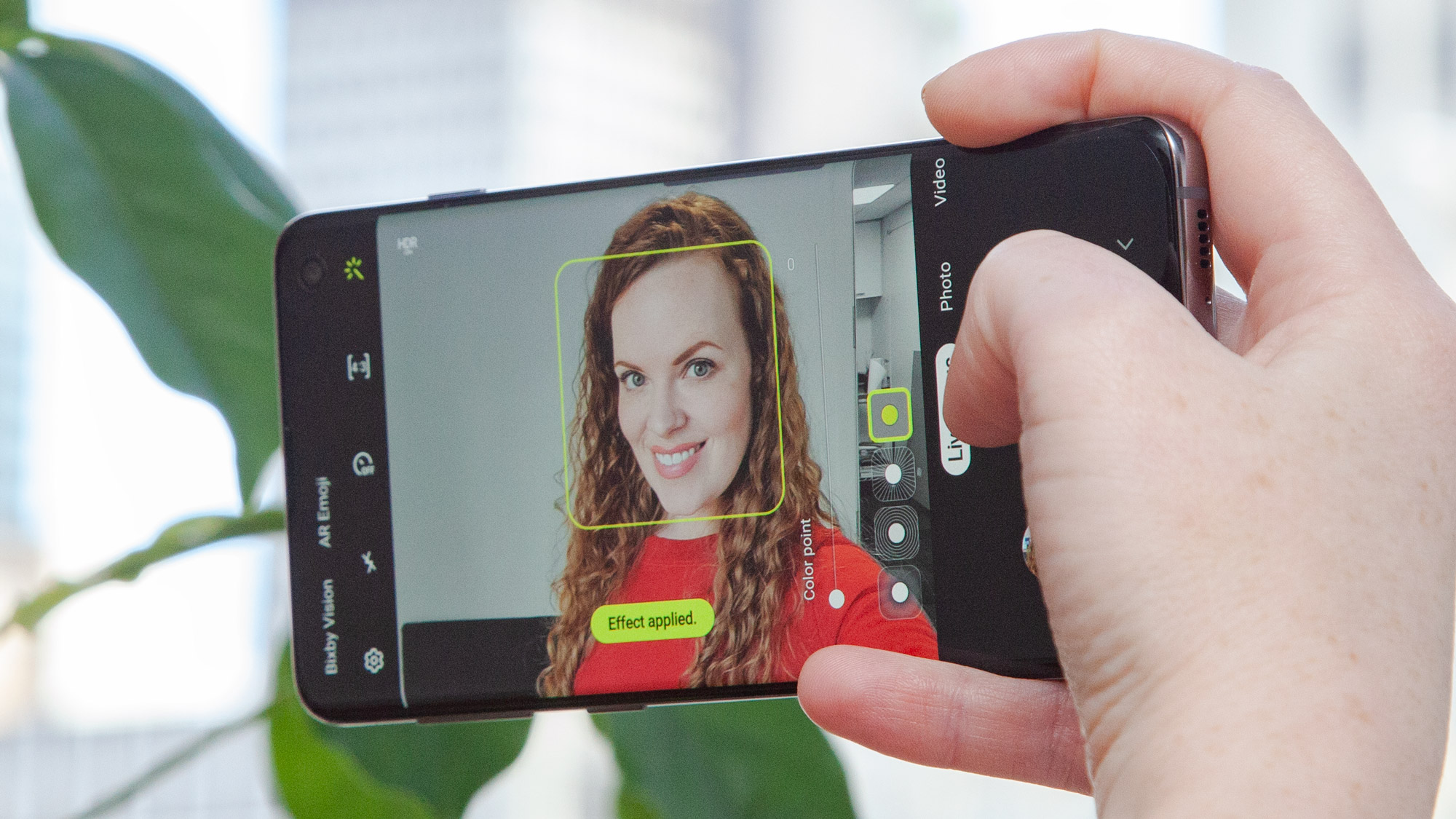
In photography, the Galaxy Note 10 and Galaxy S10 couldn't be more alike. Not only do both devices sport a triple-lens stack at the rear, but also, the cameras themselves are identical.
These handsets each pack a main 12-megapixel sensor tied to a dual-aperture lens that can switch between ƒ/1.5 and ƒ/2.4 depending on lighting conditions. It's also supported with optical image stabilization. Additionally, there's a 12-MP telephoto providing 2x optical zoom, which cuts in closer for Live Focus portraits. And rounding out the trio is a 16-MP ultrawide lens with an expansive, 123-degree field of view.
Given that the hardware is identical on the two devices, you'd expect the phones to churn out similar results. That's largely the case, though the Note 10 appears to dial up the sharpness and noise in a very slight, yet still beneficial way. I snapped a pair of portraits of my colleague Hunter using both Samsung phones, and the phablet claimed the crisper shot, with more-consistent background bokeh and more-defined contrast. That said, the differences are very slight; you'll have to look closely to spot them.
Shooting outside a cafe in lower Manhattan, the Note 10 again outlined finer details, like the plant hanging outside the storefront window. The glow of the light radiating from the red neon sign is less cloudy through the Note's lens, too.
In our dimly lit lab, we could test Night Mode on both handsets. Interestingly, the S10 provided a more vibrant, more brightly exposed scene. The cheaper of Samsung's flagships also skirted the noise that tinged the shadows in the Note 10's attempt.
Again, you'll have to scrutinize each sample to suss out the tiny differences between the Note 10's and the S10's output. That said, on average, the Note 10 did bring a smidge more clarity to its photo ops, which isn't necessarily something you'd predict simply by comparing spec sheets.
The Note 10 also brings a few new video effects to the forefront, like Live Focus and Color Point. These allow you to blur and stylize the backgrounds in videos the same way you would in photos. These features are somewhat cheesy, though they're available if you want to use them. They're currently exclusive to the Note 10 family.
Winner: Galaxy Note 10
Performance
Samsung has kept it simple with these phones. In North America, both the Galaxy Note 10 and Galaxy S10 feature Qualcomm's Snapdragon 855 processor and 8GB of RAM. (In the rest of the world, there's a small difference, with the Note 10 getting Samsung's new Exynos 9825 chipset and the S10 employing the 9820 platform.)
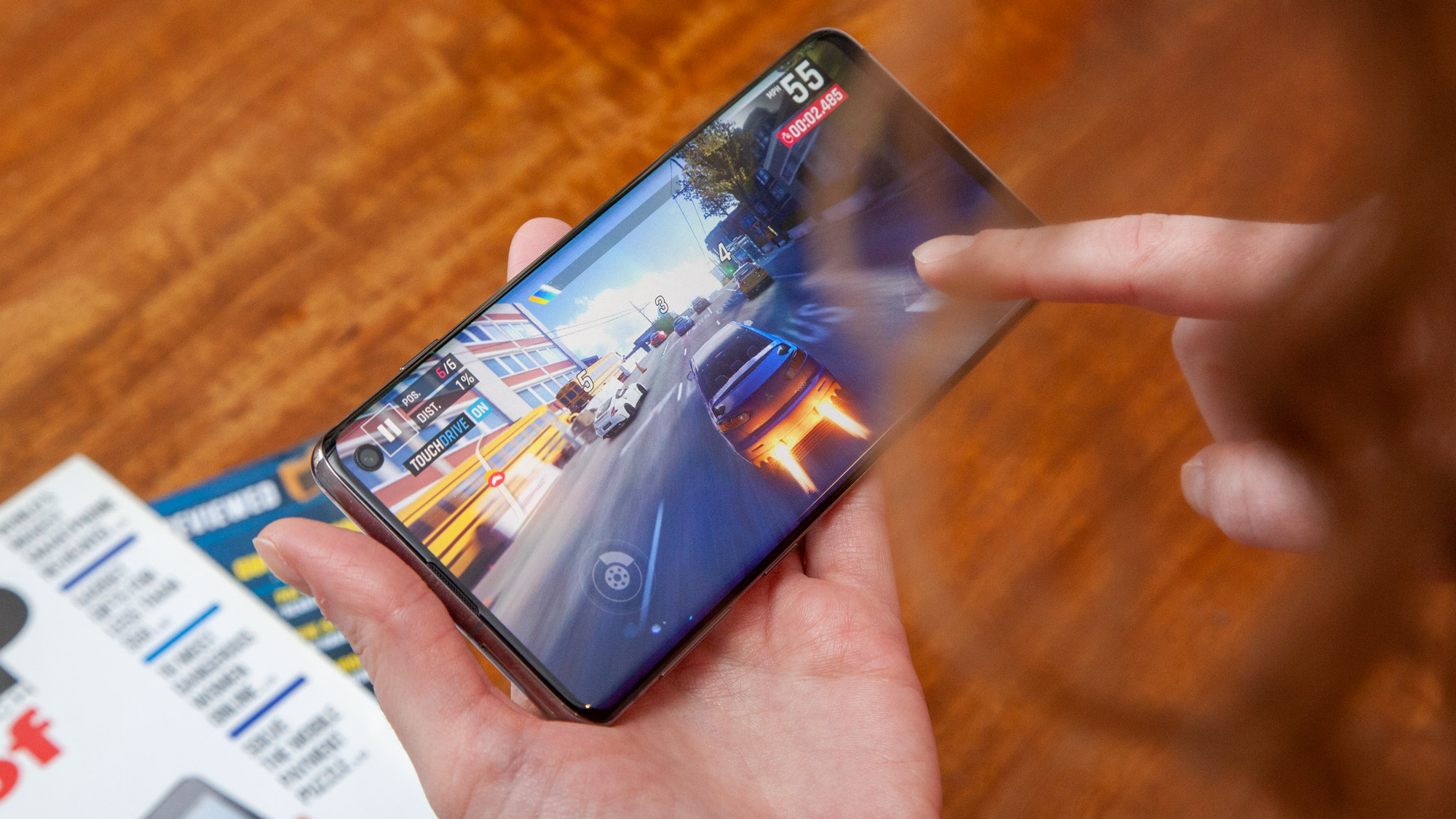
As a result, performance is pretty much even between the two phones. So even, in fact, that they barely differed in Geekbench 4, a benchmark that measures overall performance. There, the Note 10 scored 10,906 points, while the S10 followed right behind, at 10,813. A difference of 90 points really isn't noticeable, and chances are if we ran the tests again on both devices, they'd be reversed.
A similar story played out in 3DMark's Sling Shot OpenGL ES 3.1 graphics test. Here, the S10 won by a nose, turning in a score of 5,606, while the Note 10 finished with 5,374. For reference, Apple's iPhone XS Max, the most powerful phone Cupertino currently offers, delivered only 4,339 points in the same test, which does indicate inferior graphical quality and performance. As Samsung's two phones are practically in a dead heat here, they tie in this round.
Winner: Tie
Battery
The 3,500-mAh in the Galaxy Note 10 is only 100 mAh larger than the one inside the Galaxy S10, so it's surprising the devices produced different results in our custom battery test.
The Note 10 held on for an average of 9 hours and 25 minutes in multiple tests of loading websites over T-Mobile's LTE network before running out of juice. That's nearly an hour shorter than the 10:14 smartphone average, and, as it would happen, just about the same amount behind the Galaxy S10's 10-hour, 19-minute result.
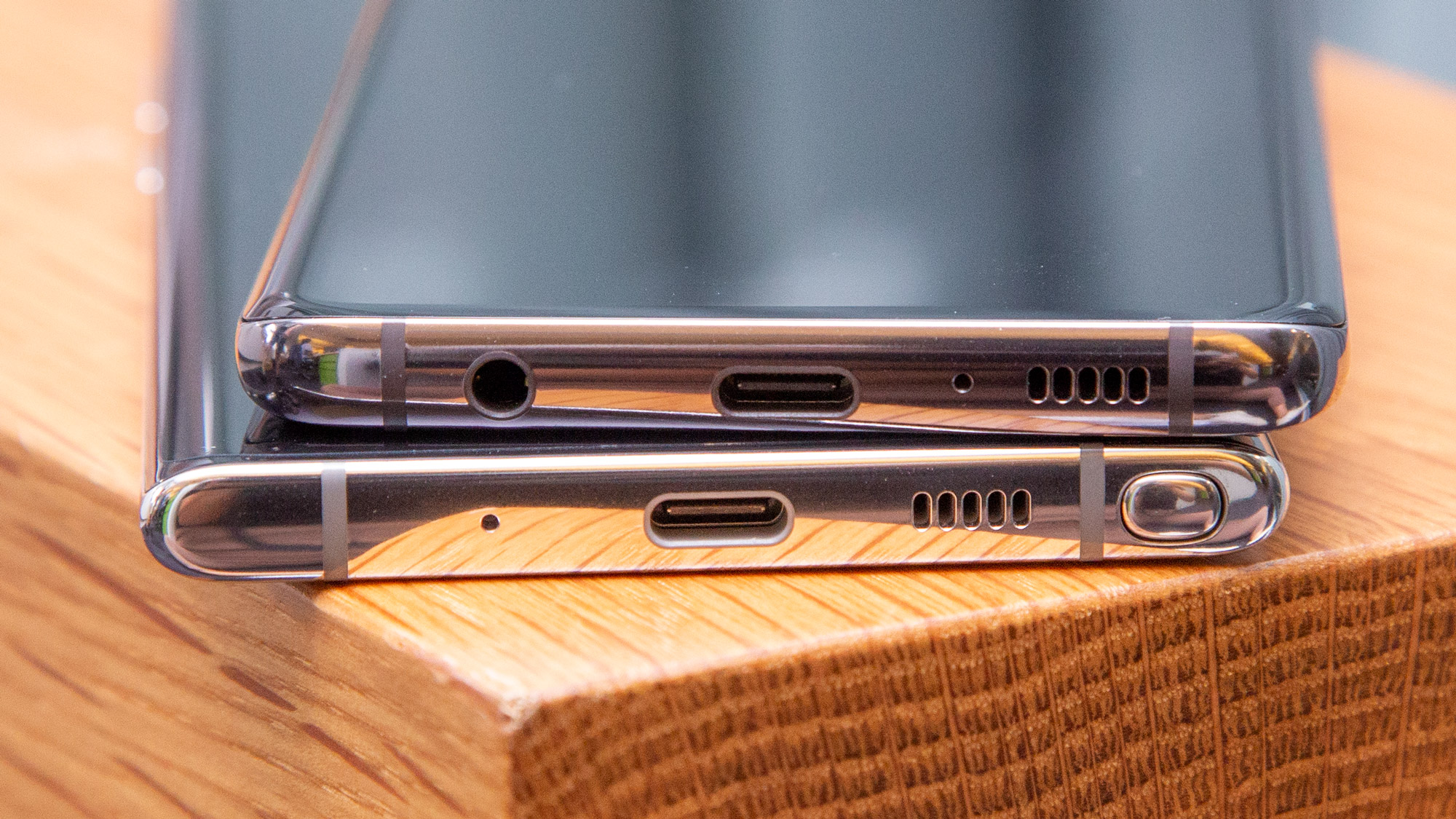
While the Note 10 lasts less time on a charge, it recharges faster, thanks to Samsung's new 25-watt Super Fast Charging technology. As a result, the Note 10 can reach 50% capacity in just 30 minutes when plugged in. None of the S10 models, save for the range-topping, 6.7-inch Galaxy S10 5G, support Super Fast Charging, meaning they'll top up a bit more slowly. The S10 wins the overall battery life battle, though the Note series' ability to juice up more quickly helps it scrub some points back.
Winner: Galaxy S10
Software and special features
All of Samsung's flagships run the phone maker's One UI front end atop Android 9 Pie. In that sense, the software experience is pretty consistent no matter which of these devices you choose.
However, the big, unavoidable difference here is the S Pen. The Note series features the only Samsung devices that come with and support the stylus, so you'll need to spring for the Note 10 if you're interested in handwriting-to-text transcription, Samsung's new Air Actions gestures and the ability to use the S Pen as a remote shutter for snapping photos when your phone is just out of reach.
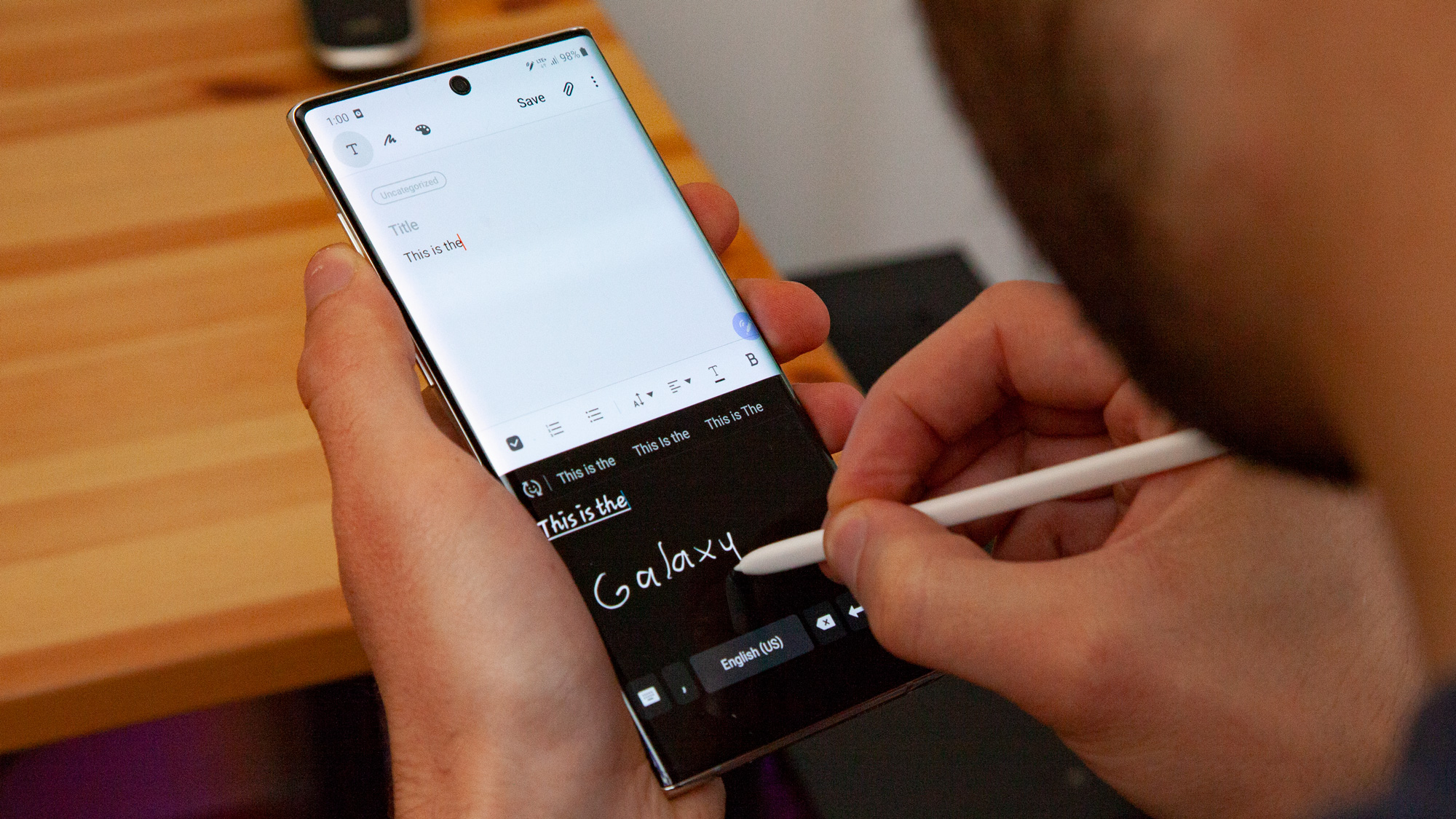
To be frank, we're not yet entirely sold on the prospect of Air Actions; only a few select apps, like the Note's stock camera experience, support the gestures. And even then, it's quite a limited experience where you're simply swiping in midair to switch shooting modes. The company could add Air Actions to other apps, and the S Pen SDK is even open to third parties taking advantage if they so choose. However, at this moment, there's not much going for it beyond the features Samsung has introduced.
Ditto for DeX, Samsung's suite that essentially turns your handset into a makeshift desktop computer. Interestingly, while the S10 does support DeX if you use one of Samsung's DeX Stations or connect the phone to a monitor via a USB-C-to-HDMI cable, only the Note 10 can interface with DeX in a windowed fashion through your Windows or Mac computer. We didn't find this to be a very useful feature, though; plus, it's a bit buggy at the moment.
That said, while not all of the Note 10's new features are winners, you still get the handwriting and editing capabilities of the S Pen, which some die-hard Note aficionados find indispensable. For that reason, the Note 10 has more going on in the features column, even if that win is almost by default.
Winner: Galaxy Note 10
Price and availability
The Galaxy Note 10 and Galaxy S10 are each available unlocked as well as from every major U.S. wireless carrier. The S10 costs $50 less than the Note 10. We happen to think you get a lot for that extra $50, but if we're comparing cost alone, the S10 edges its larger brethren in this area.
Both devices are regularly sold with trade-in promotions and discounts through most retailers and carriers. Check out the latest deals on the Galaxy Note 10 and Galaxy S10. For deals all year round, make sure you check out our Samsung discount codes.
Winner: Galaxy S10
Winner: Galaxy Note 10
If you've been considering one of Samsung's premium phones and haven't been able to choose, the Galaxy Note 10 actually makes the decision relatively easy. While it is slightly pricier than the Galaxy S10, you get more for your money.
The Note 10's lack of a headphone jack and its lower-resolution display bring it down a bit relative to the S10. However, the phablet's state-of-the-art design, the inclusion of a whopping 256GB of storage out of the box and the extra features of the S Pen make this device a better value — even if the final scores couldn't be any closer on our tally.
| Header Cell - Column 0 | Samsung Galaxy Note 10 | Samsung Galaxy S10 |
|---|---|---|
| Design (10) | 9 | 8 |
| Display (15) | 13 | 14 |
| Cameras (20) | 17 | 16 |
| Performance (15) | 13 | 13 |
| Software and special features (10) | 9 | 7 |
| Battery life (20) | 15 | 16 |
| Price and availability (10) | 6 | 7 |
| Total (100) | 82 | 81 |
In many ways, these Samsung handsets are quite similar. You're not losing much in performance, battery life or camera quality no matter which you choose. That said, those who are keen on getting the most for their $1,000 investment are advised to look toward the Note.
Sign up to get the BEST of Tom's Guide direct to your inbox.
Get instant access to breaking news, the hottest reviews, great deals and helpful tips.
Adam Ismail is a staff writer at Jalopnik and previously worked on Tom's Guide covering smartphones, car tech and gaming. His love for all things mobile began with the original Motorola Droid; since then he’s owned a variety of Android and iOS-powered handsets, refusing to stay loyal to one platform. His work has also appeared on Digital Trends and GTPlanet. When he’s not fiddling with the latest devices, he’s at an indie pop show, recording a podcast or playing Sega Dreamcast.
